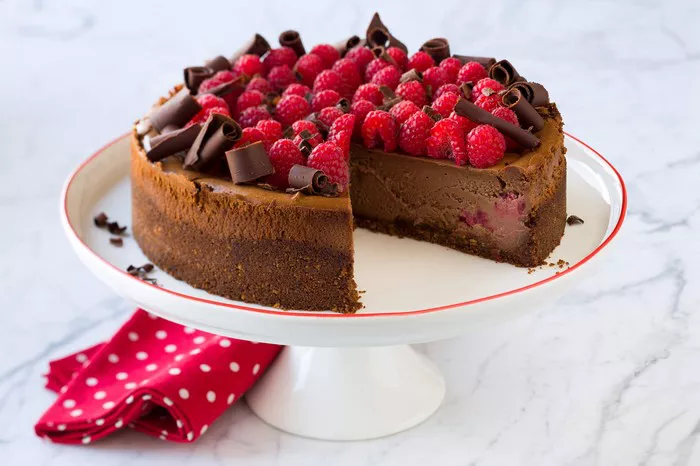Mousse cake is a luxurious dessert celebrated for its velvety texture and harmonious blend of flavors. Combining culinary artistry with scientific precision, this dessert captivates both the palate and the mind. Below, we explore the ingredients and techniques behind mousse cake, paired with insights into the psychological factors that make it universally appealing.
The Core Components of Mousse Cake
Mousse cake is a layered creation, typically featuring a base, a mousse filling, and decorative toppings. Each component plays a role in delivering its signature taste and mouthfeel.
The Base Layer
The foundation of a mousse cake is often a crisp or chewy base made from crushed biscuits, cookies, or sponge cake. Ingredients like butter, sugar, and cocoa powder bind the crumbs together, creating a contrast to the airy mousse. This layer adds structure and a satisfying textural counterpoint.
Psychologically, the crunch of the base activates the brain’s reward system. Studies suggest that contrasting textures enhance the eating experience by stimulating multiple sensory pathways, which amplifies pleasure and satisfaction.
The Mousse Filling
The mousse itself is a blend of whipped cream, eggs, sugar, and flavorings such as chocolate, fruit purees, or coffee. Gelatin or agar-agar is often added to stabilize the mixture, ensuring a light yet firm consistency. Air incorporated during whipping gives the mousse its cloud-like texture.
From a psychological perspective, the smoothness of mousse evokes comfort. The brain associates creamy textures with indulgence and safety, a remnant of early human experiences with nutrient-rich foods like breast milk. This primal connection explains why many find mousse emotionally soothing.
Toppings and Decorations
Fresh fruits, glazes, edible flowers, or chocolate shavings often adorn mousse cakes. These elements add visual appeal and bursts of complementary flavor. For example, tart berries balance a sweet chocolate mousse, while gold leaf accents signal luxury.
Visual presentation heavily influences perception. Research in color psychology shows that vibrant hues like red (from strawberries) or yellow (from mango puree) trigger excitement and happiness, enhancing the overall dining experience.
The Psychology Behind Mousse Cake’s Appeal
Mousse cake’s popularity extends beyond taste—it engages multiple senses and taps into deep-seated emotional triggers.
Sensory Experience and Emotional Response
The dessert’s layered textures—crunchy base, silky mousse, juicy toppings—create a multisensory journey. Neurologically, varied stimuli keep the brain engaged, prolonging enjoyment. This phenomenon, called “hedonic adaptation prevention,” explains why diverse textures feel more satisfying than monotonous ones.
Additionally, the act of eating mousse cake often occurs during celebrations, linking it to positive memories. The brain’s hippocampus associates specific flavors and textures with past joy, reinforcing cravings for the dessert in similar contexts.
Color Psychology in Dessert Presentation
Color plays a pivotal role in food appeal. A bright raspberry topping on a white chocolate mousse cake isn’t just visually striking—it subconsciously signals freshness and energy. Conversely, dark chocolate hues evoke sophistication and calm. Chefs leverage these associations to craft desserts that align with desired emotional outcomes.
The Comfort of Texture and Consistency
The uniform smoothness of mousse provides a sense of predictability, which the brain interprets as safe and comforting. In contrast, the base’s crunch introduces an element of surprise, creating a pleasurable tension between expectation and novelty. This balance mirrors principles of “flow” in psychology, where a mix of familiarity and challenge maximizes engagement.
Crafting the Perfect Mousse Cake
Creating an exceptional mousse cake requires technical skill and an understanding of ingredient interactions.
Balancing Flavors and Textures
A well-designed mousse cake balances sweet, bitter, acidic, and fatty elements. For instance, a matcha mousse might pair with a honey-sweetened base to offset bitterness, while a passion fruit glaze adds acidity. This balance prevents sensory overload, ensuring no single flavor dominates.
The Role of Temperature and Timing
Temperature control is critical. Over-whipping cream can lead to a grainy texture, while insufficient chilling causes the mousse to collapse. The brain’s perception of temperature also affects taste—cool mousse enhances refreshing flavors like citrus, while room-temperature servings amplify rich notes like dark chocolate.
Presentation Techniques for Maximum Impact
Aesthetics influence taste perception. A study in the Journal of Culinary Science found that diners rate beautifully plated desserts as 30% tastier than identical dishes presented plainly. Techniques like piping mousse into geometric shapes or using edible glitter cater to the brain’s preference for novelty and order.
Cultural and Historical Influences on Mousse Cake
Mousse cake’s evolution reflects global culinary traditions and historical trends.
Origins of Mousse in French Cuisine
The mousse technique originated in 18th-century France, where chefs experimented with aerated desserts. Early versions used savory ingredients like fish or liver, but sweet mousses gained prominence in Parisian salons, symbolizing elegance and refinement.
Global Adaptations and Variations
Japanese chefs revolutionized mousse cakes by incorporating matcha and red bean paste, aligning with cultural preferences for subtle sweetness. In Latin America, dulce de leche mousse cakes highlight regional ingredients, demonstrating how local flavors reshape classic recipes.
Modern Trends in Mousse Cake Design
Contemporary pastry chefs prioritize minimalism and sustainability. Vegan mousses made with aquafaba (chickpea brine) or coconut cream cater to dietary trends, while organic dyes replace artificial colorings. These shifts reflect broader societal values, linking food choices to identity and ethics.
Conclusion
Mousse cake is a fusion of science, art, and psychology. Its ingredients and preparation methods engage the senses, while its textures and colors tap into subconscious emotional responses. By understanding both the culinary and psychological layers of this dessert, we appreciate why it remains a timeless delight across cultures. Whether enjoyed at a celebration or as a personal treat, mousse cake offers a momentary escape into luxury—a sweet reminder of how food nourishes both body and soul.
Related topics:


























